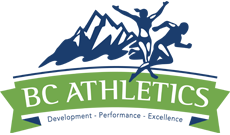IAAF - Competition Rules 2009: Cross Country
SECTION IX - CROSS-COUNTRY
RULE 250
Cross-Country Races
General
1. There are extreme variations in conditions in which Cross-Country is practised throughout the world and it is difficult to legislate international standardisation of this sport. It must be accepted that the difference between very successful and unsuccessful events often lies in the natural characteristics of the venue and the abilities of the course designer. The following Rules are intended as a guide and incentive to assist countries to develop Cross-Country running. See also the IAAF Distance Running Manual for detailed organisational information.
Season
2. The Cross-Country season should normally extend throughout the winter months after the close of the track and field season.
The Course
3. (a) the course must be designed on an open or woodland area, covered as far as possible by grass, with natural obstacles, which can be used by the course designer to build a challenging and interesting race course.
(b) The area must be wide enough to accommodate not only the course but also all the necessary facilities.
4. For Championships and international events and, wherever possible, for other competitions:
(a) a loop course must be designed, with the loop measuring between 1750m and 2000m. If necessary, a small loop can be added in order to adjust the distances to the required overall distances of the various events, in which case the small loop must be run in the early stages of the event. It is recommended that each long loop should have a total ascent of at least 10m.
(b) Existing natural obstacles shall be used if possible. However, very high obstacles should be avoided, as should deep ditches, dangerous ascents / descents, thick undergrowth and, in general, any obstacle which would constitute a difficulty beyond the aim of the competition. It is preferable that artificial obstacles should not be used but if such use is unavoidable, they should be made to simulate natural obstacles met within open country. In races where there are large numbers of athletes, narrow gaps or other hindrances which would deny the athletes an unhampered run shall be avoided for the first 1500m.
(c) The crossing of roads or any kind of macadamised surfaces shall be avoided or at least kept to a minimum. When it is impossible to avoid such conditions in one or two areas of the course, the areas must be covered by grass, earth or mats.
(d) Apart from the start and finish areas, the course must not contain any other long straight. A “natural“, undulating course with smooth curves and short straights, is the most suitable.
5. (a) The course shall be clearly marked with tape on both sides. It is recommended that all along one side of the course a 1m wide corridor, heavily fenced from the outside of the course, shall be installed for the use of organisation officials and media only (obligatory for Championship events). Crucial areas must be heavily fenced; in particular the start area (including the warmup area and the call room) and finish area (including any mixed zone). Only accredited people will be allowed access to these areas.
(b) The general public shall only be allowed to cross the course in the early stages of a race at well organised cross-over points, marshalled by stewards.
(c) It is recommended that, apart from the start and finish areas, the course be a width of five metres, including the obstacle areas.
Distances
6. Distances at IAAF World Cross-Country Championships should be approximately:
- Men 12 km
- Junior Men 8 km
- Women 8 km
- Junior Women 6 km
It is recommended that similar distances be used for other International and National competitions.
The Start
7. The races shall be started by the firing of a gun. The commands and procedure for races longer than 400m shall be used (Rule 162.3). In international races, five-minute, three-minute and a one-minute warnings shall be given.
Departure boxes shall be provided and the members of each team shall be lined up behind each other at the start of the race.
Drinking/Sponging and Refreshment Stations
8. Water and other suitable refreshments shall be available at the start and finish of all races. For all events, a drinking / sponging station shall be provided every lap, if weather conditions warrant such provision.
Race Conduct
9. If the Referee is satisfied on the report of a Judge or Umpire or otherwise that an athlete has left the marked course thereby shortening the distance to be covered, he shall be disqualified.
Mountain Races
10. Mountain Races take place across country which is mainly off- road and involves considerable amounts of ascent (for mainly uphill races) or ascent/descent (for races which start and finish at the same level).
The recommended approximate distances and total amount of ascent for international races is as follows:
|
|
Mainly Uphill |
Start/Finish at Same Level |
||
|
Distance |
Ascent |
Distance |
Ascent |
|
|
Senior Men |
12km |
1200m |
12km |
750m |
|
Senior Women |
8km |
800m |
8km |
500m |
|
Junior Men |
8km |
800m |
8km |
500m |
|
Junior Women |
4km |
400m |
4km |
250m |
Not more than 20% of the distance may be on macadamised surface. The courses may be of a lap design.







